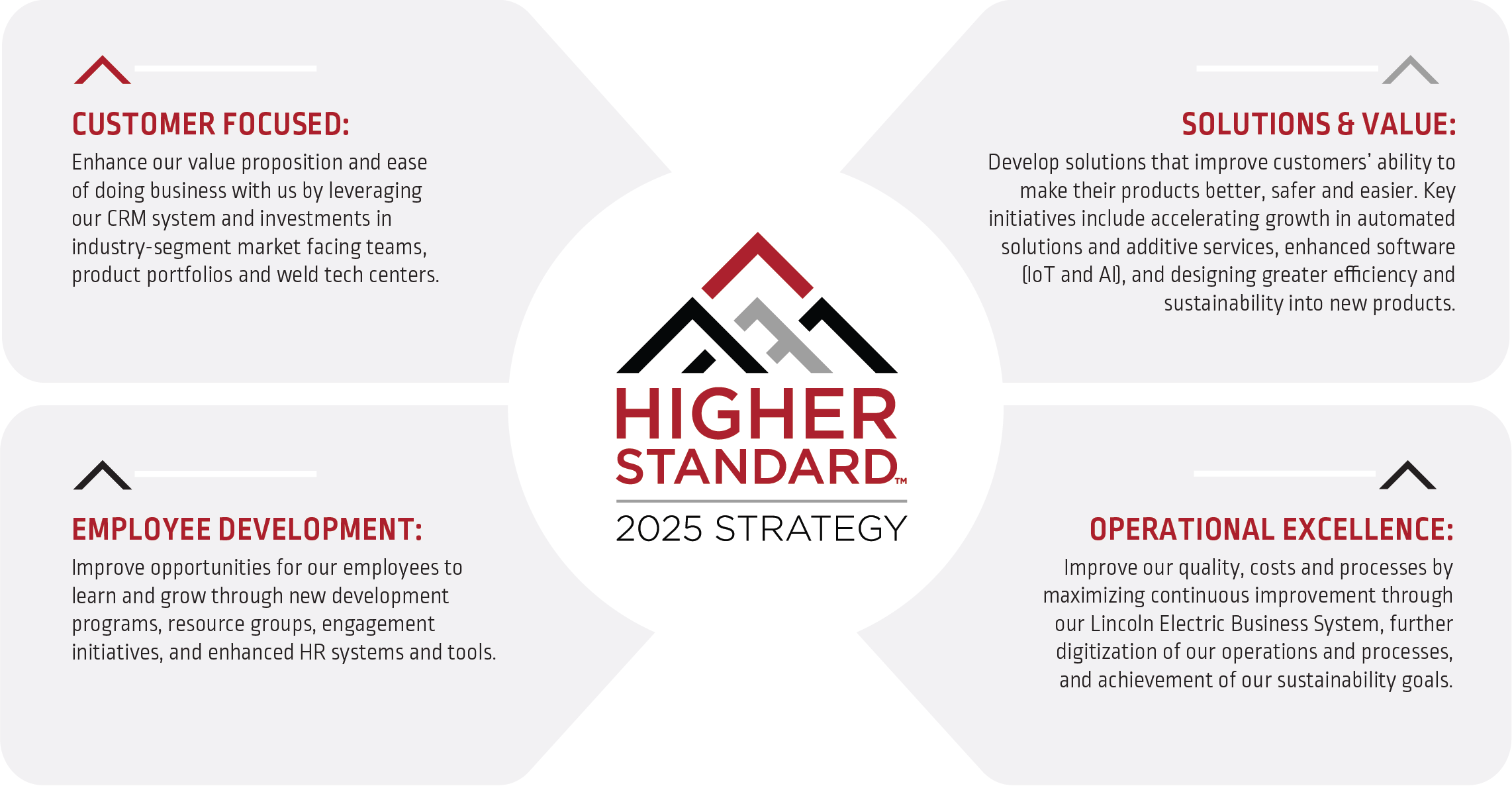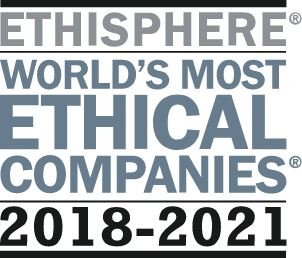HIGHER STANDARD 2025 STRATEGY
We are pursuing our long-term Higher Standard 2025 Strategy (2025 Strategy), to deliver superior value to all stakeholders. Launched in 2019, the 2025 Strategy focuses on achieving best-in-class operational, financial, and sustainability performance, as well as amplifying employee engagement and development in the 2020 to 2025 strategic period.
We are focused on enhancing our performance in four key areas, which are critical to our long-term success. These areas are represented by four peaks in our strategy logo. We recognize that our industry leadership position reflects our “customer first” approach and our track record of developing innovative solutions that have a measurable impact on their operations. We also recognize that our employees are our number one asset and need to be engaged professionally through training and career planning to maximize their potential. We believe that operating smartly and responsibly is not only an obligation but a key competitive advantage.
We are pleased to issue this sustainability report to highlight the initiatives, goals, and actions that we have taken to address sustainability in each of the 2025 Strategy’s four peaks. Through this strategy, we aim to build value for our stakeholders and drive alignment with our operations, products, and ESG-related initiatives. To learn more about the financial goals of our 2025 Strategy, refer to our 2021 Annual Report.

2025 HIGHER STANDARD STRATEGY GOALS
SUSTAINABILITY HIGHLIGHTS
SAFETY
2025 Goal: 52% Reduction in
Total Recordable Case Rate (TRCR)
GHG EMISSIONS
2025 Goal: 10% Reduction in
Scope 1 and 2 GHG emissions
ENERGY INTENSITY
2025 Goal: 16%
Reduction
RECYCLING
2025 Goal: 80% Rate
LANDFILL AVOIDANCE
2025 Goal: 97% Rate
WATER USAGE
2025 Goal: 14% Reduction



“World’s Most Ethical Companies” and “Ethisphere” names and marks are registered trademarks of Ethisphere LLC. The CEO Action for Diversity & InclusionTM is the largest CEO-driven business commitment to advance diversity and inclusion within the U.S. workplace.
1 Energy intensity is total energy consumption per total labor hours worked. In 2021, total energy consumption declined 6% vs. the 2018 baseline.

